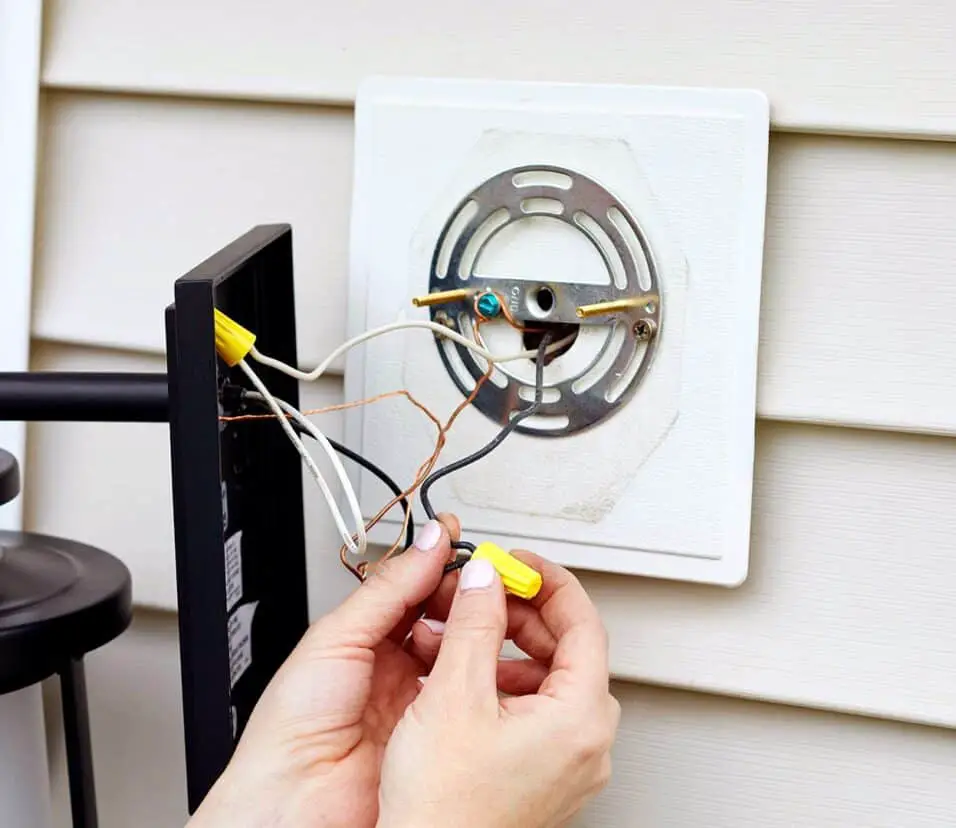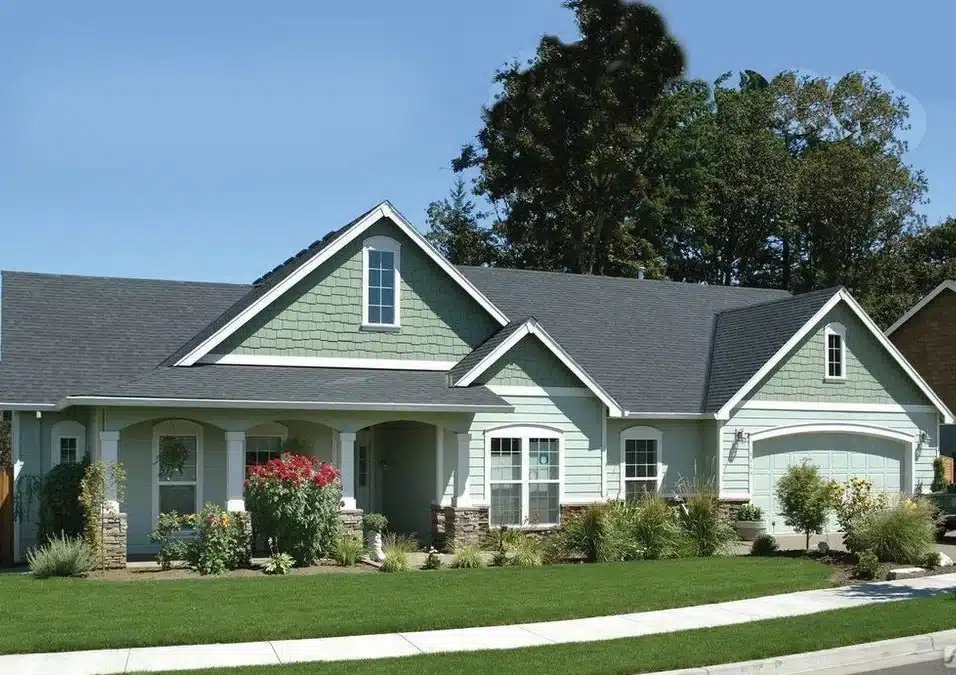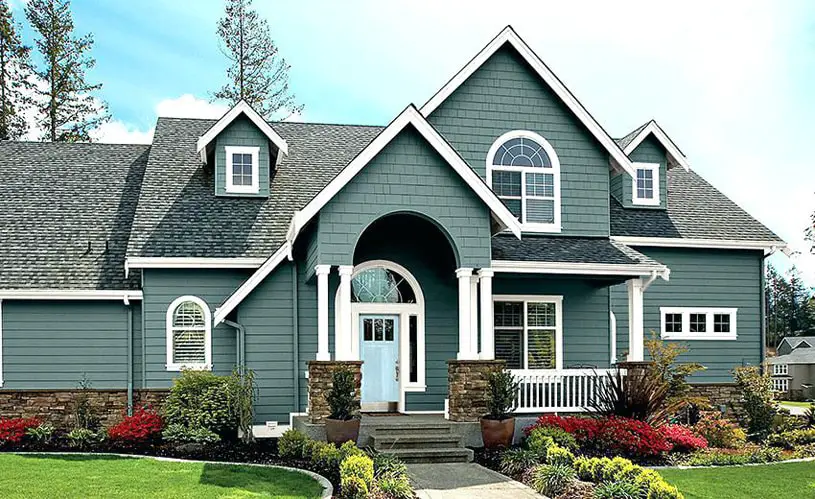How To Clean Exterior Painted Wood
Introduction
How To Clean Exterior Painted Wood: Maintaining the beauty and longevity of your home’s exterior painted wood surfaces is essential for curb appeal and overall structural integrity. Over time, your exterior painted wood can accumulate dirt, grime, mildew, and other environmental contaminants, diminishing its visual appeal and potentially causing damage. Fortunately, with the right knowledge and techniques, you can easily restore your exterior painted wood to its former glory.
In this comprehensive guide on “How To Clean Exterior Painted Wood,” we will walk you through the step-by-step process of effectively cleaning and maintaining your outdoor painted surfaces. Whether it’s your siding, deck, fence, or other exterior wood elements, we’ve got you covered. From gathering the necessary supplies to choosing the right cleaning methods, this guide will empower you with the information needed to tackle dirt, mold, and stains while preserving the integrity of your paint job.
Discover expert tips, eco-friendly solutions, and time-tested strategies to keep your exterior paint wood looking vibrant and protected against the elements. A well-maintained exterior not only enhances your home’s aesthetics but also extends its lifespan. Let’s embark on a journey to revitalize and preserve your exterior painted wood surfaces for years to come.
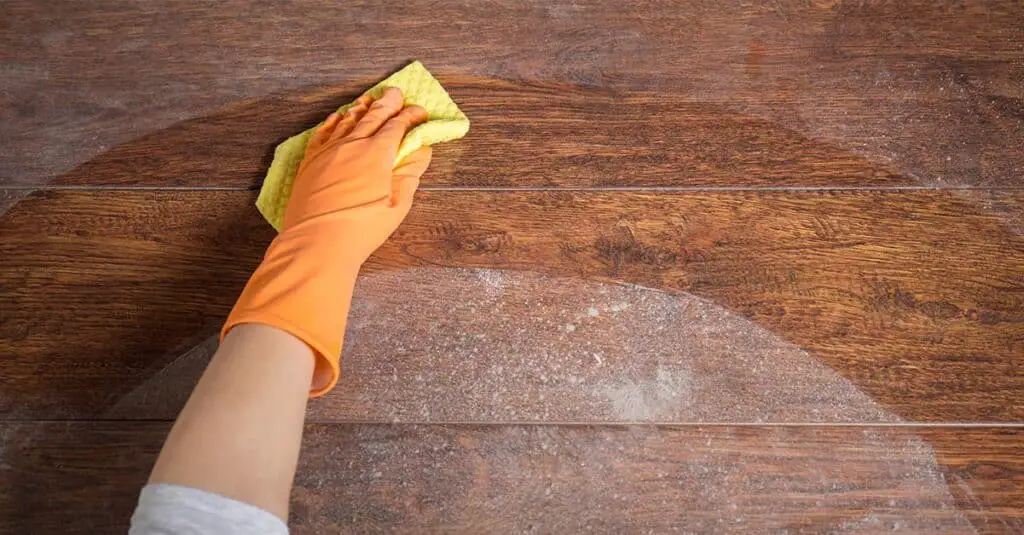
What is the best cleaner for painted wood?
No matter the surface, it is easiest to always use a good dish soap and water to dilute it for your cleanser. All-purpose cleaner, wood cleaner, and white vinegar are also suitable alternatives. But if you’re not sure and you want to be safe, it is best to stick to good old soap and water!
The best cleaner for painted wood is typically a mild detergent or dish soap mixed with water. This solution is effective at removing dirt, dust, and general grime from painted wood surfaces without causing damage to the paint.
Here’s how to create and use this solution:
- Prepare the Cleaning Solution: Mix a few drops of mild detergent or dish soap with water in a bucket. You can use warm water for better cleaning results.
- Dampen a Soft Cloth or Sponge: Dip a soft cloth or sponge into the soapy water mixture. Wring out excess water so that the cloth or sponge is damp but not dripping wet.
- Gently Clean the Painted Wood: Gently wipe down the painted wood surface with the damp cloth or sponge. Work in small sections, and use a circular motion to clean effectively. Pay extra attention to areas with stains or stubborn dirt.
- Rinse Thoroughly: After cleaning, rinse the painted surface thoroughly with clean water to remove any soap residue. This step is crucial to prevent any residue from affecting the paint’s appearance.
- Dry the Surface: Allow the surface to air dry or use a clean, dry cloth to speed up the drying process.
It’s important to note that this cleaning solution is suitable for general maintenance and cleaning of painted wood surfaces. For tougher stains or specific issues like mold or mildew, you may need to use specialized cleaners designed for those purposes. Always follow the manufacturer’s instructions when using any cleaning product on painted wood to ensure the best results and prevent damage to the paint. Additionally, test a small, inconspicuous area before cleaning to ensure that the chosen cleaner doesn’t harm or discolor the paint.
How do you clean exterior painted surfaces?
We would recommend a long-handled, soft-bristled scrub brush and a mild solution of soapy water. A gentle scrub with this, and then a light rinse with a garden hose, will do wonders to keep your home looking great! If you have any mildew issues, you could add a couple tablespoons of bleach to the mixture.
Cleaning exterior painted surfaces involves several steps to ensure the best results:
- Prepare the Area: Start by removing any loose debris, such as leaves, dirt, and cobwebs, from the surface using a broom or brush.
- Mix a Cleaning Solution: Prepare a cleaning solution by mixing mild detergent or dish soap with water in a bucket. For tougher stains, you can add a small amount of white vinegar.
- Apply the Solution: Dip a soft brush, sponge, or cloth into the cleaning solution and gently scrub the painted surface. Work in small sections to ensure thorough cleaning.
- Rinse: Use a garden hose or a pressure washer on a low setting to rinse away the cleaning solution and loosened dirt. Ensure thorough rinsing to prevent residue buildup.
- Inspect for Stains: Check for any remaining stains or problem areas. Stubborn stains may require additional attention or a specialized cleaner.
- Dry the Surface: Allow the surface to air dry or use a clean, dry cloth to speed up the drying process.
- Optional: Apply Protective Coating: To maintain the paint’s longevity and cleanliness, consider applying a clear protective sealant or topcoat after the surface has completely dried.
How do you keep painted wood clean?
Top tips for cleaning painted furniture
- Always dust your furniture before you wipe it down with a damp cloth.
- Never use cleaning products or furniture polishes on your handmade furniture.
- Use a soft, lint-free cloth to wipe down the furniture.
To keep painted wood clean over the long term, follow these tips:
Keeping painted wood clean requires regular maintenance and preventative measures to preserve its appearance and longevity.
Here’s a guide on how to keep painted wood surfaces clean:
Establish a Cleaning Routine: Create a regular cleaning schedule to prevent dirt and grime from accumulating on the painted wood. Aim to clean the surface at least once or twice a year, or more frequently if needed.
Dust and Debris Removal: Start by removing loose dirt, dust, and debris from the surface using a soft brush, broom, or a handheld vacuum cleaner with a brush attachment. Pay attention to corners, crevices, and any decorative details.
Inspect for Damage: Periodically inspect the painted wood for signs of wear, peeling, or chipping. Address any issues promptly to prevent further damage. Sand, prime, and repaint damaged areas as needed.
Regular Cleaning: Use a mild cleaning solution to clean the painted wood. The solution can be a mixture of mild dish soap or a dedicated wood cleaner diluted in water. Gently scrub the surface with a soft cloth or sponge. Avoid abrasive materials or harsh chemicals that can damage the paint.
Rinse Thoroughly:
After cleaning, rinse the surface thoroughly with clean water to remove any soap residue. Proper rinsing helps maintain the paint’s appearance.
Dry Completely: Allow the painted wood to air dry naturally or use a clean, dry cloth to remove excess moisture. Ensure the wood is completely dry to prevent moisture-related issues like mold and mildew.
Protective Coatings: Consider applying a clear protective sealant or topcoat over the painted wood. This extra layer of protection can shield the paint from UV rays, moisture, and dirt, making it easier to clean in the future.
Address Stains and Spills Promptly: If you notice spills or stains, clean them as soon as possible using the appropriate cleaning method. The longer a stain sits on the paint, the more challenging it may be to remove.
Trim Vegetation: Trim branches, vines, or plants that may rub against or damage the painted wood. Overhanging vegetation can lead to stains and damage if not managed.
Preventative Measures: Take steps to prevent issues. For outdoor painted wood like fences and decks, make sure water drains away from the wood’s surface to minimize moisture exposure. Use furniture pads or protectors to prevent scratches and dings.
By following these steps and maintaining a proactive approach to cleaning and care, you can keep your painted wood surfaces clean, attractive, and protected against wear and tear for years to come.
Does vinegar clean painted wood?
Clean painted woodwork with a solution of 1/2 cup white vinegar, 1 cup ammonia, 1/4 cup baking soda, and 1 gallon of lukewarm water. No rinsing is necessary with this solution. Clean painted woodwork with a solution of 1/2 cup white vinegar, 1 cup ammonia, 1/4 cup baking soda, and 1 gallon of lukewarm water.
Yes, vinegar can be used to clean painted wood surfaces effectively. White vinegar, when diluted with water (usually in equal parts), can serve as a natural and environmentally friendly cleaner. It is particularly useful for cutting through grease and grime. However, it’s essential to exercise caution when using vinegar on painted wood.
Before applying vinegar, conduct a small test in an inconspicuous area to ensure that it doesn’t harm the paint or cause discoloration. When using vinegar, mix it with water and apply it gently with a cloth or sponge. After cleaning, rinse the area thoroughly with clean water to remove any vinegar residue.
Vinegar is a versatile household cleaner, but it should be used carefully on painted surfaces to prevent potential damage.
Is exterior paint washable?
Clean Up Could Be Harder Than You Think. Most interior paints are acrylic latex. These pains are water-soluble, and they’re made to be washable. Exterior paints, on the other hand, are usually waterproof, which makes them far more difficult to clean up in the case of a spill or splatter.
Yes, exterior paint is typically designed to be washable to some extent. High-quality exterior paints are formulated to withstand mild cleaning methods without significant damage to the finish. They are designed to repel dirt and resist staining, making them easier to clean when necessary. However, the washability of exterior paint can vary depending on factors such as the paint type, the quality of the paint, and the surface’s condition.
To clean exterior paint effectively, it’s important to use gentle cleaning methods. Harsh chemicals, abrasive scrubbing, or high-pressure washing can damage the paint. Instead, use a mild detergent or dish soap mixed with water to create a soapy solution. Apply this solution with a soft brush or cloth and gently scrub the painted surface. Rinse thoroughly with clean water to remove any soap residue.
Always follow the paint manufacturer’s recommendations for cleaning and maintenance, as they can provide specific guidance for the type of paint used on your exterior surfaces.
What is the best thing to clean exterior paint with?
Dilute a mild detergent that is suitable for your walls material and existing paint in water. Use a brush to remove any dirt and stains. Alternatively use a low pressure cleaning system. Rinse the exterior walls with clean water to remove any dirt and detergent.
Yes, exterior paint is typically designed to be washable to some extent. High-quality exterior paints are formulated to withstand mild cleaning methods without significant damage to the finish. They are designed to repel dirt and resist staining, making them easier to clean when necessary. However, the washability of exterior paint can vary depending on factors such as the paint type, the quality of the paint, and the surface’s condition.
To clean exterior paint effectively, it’s important to use gentle cleaning methods. Harsh chemicals, abrasive scrubbing, or high-pressure washing can damage the paint. Instead, use a mild detergent or dish soap mixed with water to create a soapy solution. Apply this solution with a soft brush or cloth and gently scrub the painted surface. Rinse thoroughly with clean water to remove any soap residue.
Always follow the paint manufacturer’s recommendations for cleaning and maintenance, as they can provide specific guidance for the type of paint used on your exterior surfaces.
Is painted wood easy to clean?
The best method is surprisingly straightforward: using a lint free cloth or duster, simply wipe your painted furniture clean. Not only does this keep the colour looking fresh and new, it also prevents dirt and dust from collecting on the surface which, if left to settle, will require more vigorous cleaning.
Painted wood surfaces can be relatively easy to clean, especially if you follow a regular maintenance routine. Cleaning painted wood typically involves using gentle cleaning solutions, such as mild detergent or a mixture of dish soap and water, as mentioned above. Regular cleaning can remove surface dirt, dust, and environmental contaminants without much difficulty.
However, the ease of cleaning may vary depending on the quality of the paint, the type of wood, and the condition of the surface. Some painted wood surfaces may require more effort, especially if they have accumulated stubborn stains, mildew, or mold. In such cases, using the appropriate cleaning methods and, if needed, specialized cleaning products can make the task more manageable.
The key to keeping painted wood easy to clean is to establish a routine maintenance schedule and address any issues promptly to prevent them from becoming more challenging to clean in the future.
How do you protect newly painted wood?
In general, you want to apply furniture sealer using multiple thin, even coats. At least two thin coats of sealer is recommended but I usually apply 3-4 coats of sealer on high-traffic pieces. If you are using a brush to apply furniture sealer, brush it on in long, even strokes.
Protecting newly painted wood is crucial to ensure the longevity and beauty of the finish. Here are some steps to follow:
- Allow Proper Drying Time: After painting, allow the wood to dry thoroughly according to the manufacturer’s recommended drying times before exposing it to any elements or moisture.
- Avoid Heavy Use: Be cautious with newly painted surfaces, especially if they are high-traffic areas. Avoid placing heavy objects on them, and be gentle when cleaning.
- Protect from Moisture: Prevent exposure to rain, dew, or high humidity during the curing process. Use tarps or covers if necessary.
- Regular Cleaning: Begin a regular cleaning and maintenance routine to remove dirt and contaminants. Use gentle cleaning methods and avoid abrasive materials.
- Apply a Protective Coating: Consider applying a clear protective sealant or topcoat to the painted wood. This extra layer of protection can shield the paint from UV rays, moisture, and dirt.
- Monitor and Touch Up: Regularly inspect the painted wood for any signs of wear, peeling, or damage. Address any issues promptly by sanding, priming, and repainting the affected areas to prevent further deterioration.
By taking these protective measures, you can help ensure that your newly painted wood retains its fresh appearance and durability for years to come.
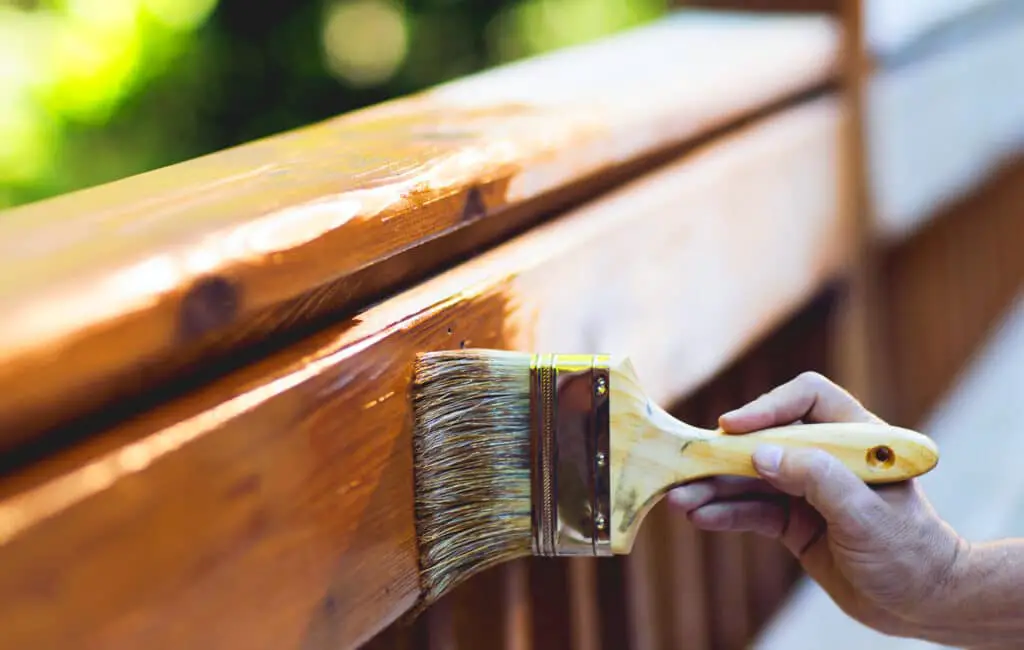
Conclusion
Learning how to clean exterior painted wood is a fundamental skill for every homeowner. Your home’s exterior is the first impression guests and passersby have, and maintaining its painted wood surfaces ensures a welcoming and well-cared-for appearance. Beyond aesthetics, regular cleaning also safeguards the wood from moisture, mold, and UV damage, prolonging its life.
Throughout this guide, we’ve explored various cleaning methods, from basic soap-and-water solutions to specialized cleaners for stubborn stains. We’ve also stressed the importance of safety measures and eco-friendly options to protect both your health and the environment.
Remember, regular maintenance is key. By incorporating these cleaning techniques into your home maintenance routine, you’ll preserve the integrity of your exterior painted wood and save money on potential repairs or repaints down the road.
So, roll up your sleeves, gather your supplies, and embark on the journey to a cleaner, more beautiful exterior. With the knowledge and guidance provided in this guide, you can confidently keep your exterior wood looking its best year after year.
Elevate your home’s curb appeal, protect your investment, and enjoy the satisfaction of a well-maintained exterior—all by mastering the art of cleaning exterior painted wood.





